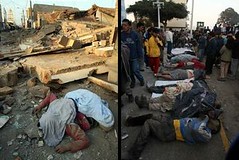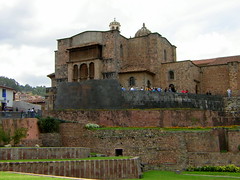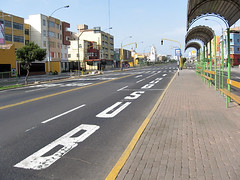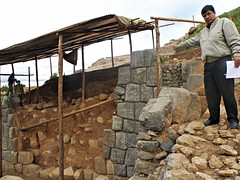Little town of Quince Mil is becoming a Hotspot [Featured]
For TIME, Lucien Chauvin writes about developments in the little town of Quince Mil, from the benefits of the new Inter-Oceanic Highway that links the Atlantic with the Pacific via Peru and Brazil, to the environment problems it will bring.
A sure way to get people riled up in Quince Mil, a sweltering outpost in Peru’s southern jungle, is to ask about the origin of the town’s uncommon name. There are at least four versions explaining the name, which means “Fifteen Thousand,” each more colorful than the one before it. Mayor Mario Samanez claims to have the official version. He says its rains around 15,000 mm (590 inches) each year in the town, hence the name. “This is the spot with the world’s second highest amount of rainfall annually. That is where the name comes from,” Samanez says.
Actually the U.S. National Oceanic and Atmospheric Administration does not list Quince Mil among the wettest places in the world. The title goes to Mawsynram, India, with 467 inches, followed by jungle spots in Colombia and Hawaii. (See pictures of Peru’s sacred glacier melting.)
Local residents in Quince Mil have their own theories about the name. Some say a group of explorers passing through lost 15,000 pesos where the town now stands. The place was called 15,000 because that’s what the explorers would ask for every time they came back to search for the cash. The town’s name has become a synonym for bad luck. But malevolence may be at the origin as well. Fernando Farro, a local farmer, says Quince Mil takes its name from the amount of money the Peruvian government gave Russian fortune-seekers at the turn of the 20th century to eliminate Amazonian tribes and open the area for sugar plantations. And that darker explanation may be more relevant now as more and more attention is being paid to the backwater town.
Quince Mil sits at a strategic point on one of the final legs of a new highway that will link Peru’s Pacific coast to Sao Paulo on Brazil’s southern Atlantic coast. A few years ago it would take a week to get from Cuzco, in the Andes, to Quince Mil, with the road reaching elevations of 14,000 feet and descending fast into thick, tropical forest. The same route, now being paved by a Brazilian construction company, will take around six hours when the road is finished. “The road means radical change for the population. It is a great opportunity for people throughout the valley to get their products to markets,” says Samanez, who expects the blacktop to finally reach the town in mid-2010. (See pictures of Sao Paulo, the ‘Clean City.’)
Tags: amazon, brazil, environment, Inter-Oceanic Highway, quincemil, rainforest, [Featured]










